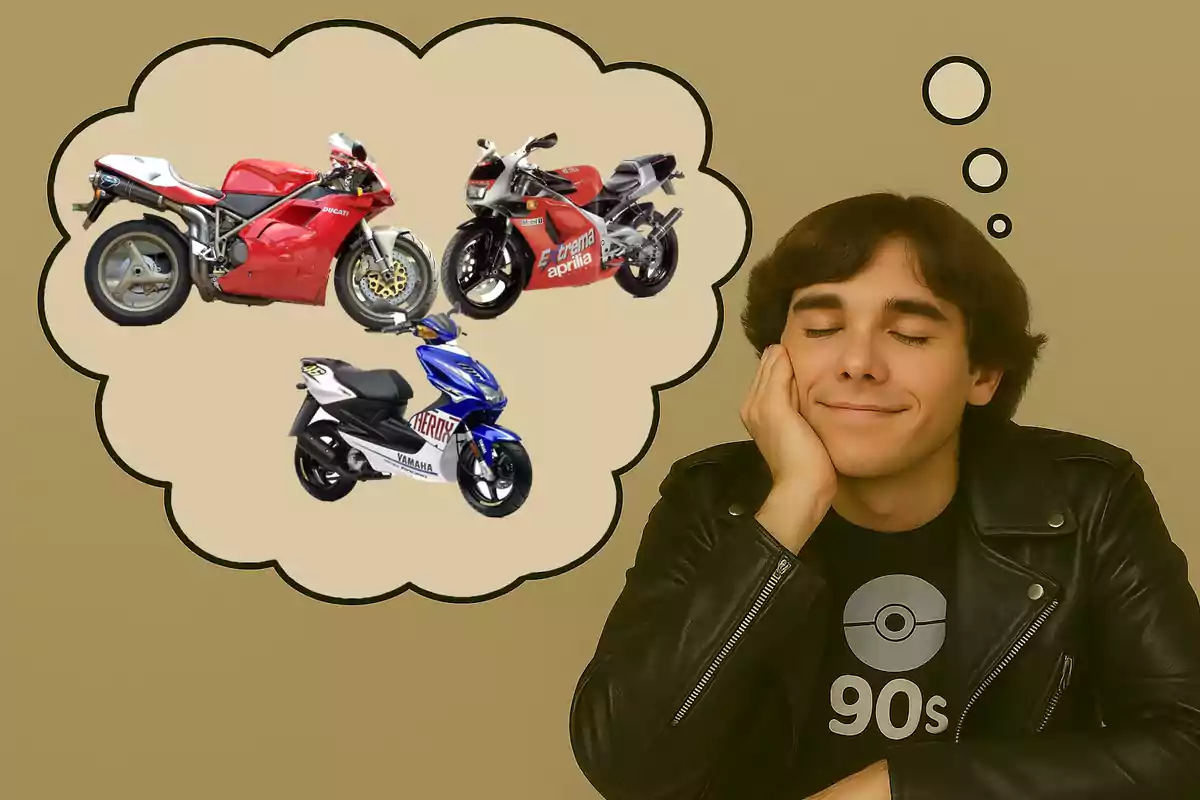
Motorcycles you dreamed of in the '90s: 10 unforgettable legends that defined a generation
If you started riding a motorcycle in the 1990s, it is very likely that you look back with a certain nostalgia
I'm sure you remember your first motorcycles, the ones you dreamed of back then. In many cases, you ended up trading them for more modern and better models, which never managed to occupy the same place in your memory.
Here, we review some of the stars of the teenage dreams of the '90s.
With this article, we close a journey that began in the '70s and continued through the '80s. Three crucial decades for two-wheel enthusiasts.
These are years that mark the definitive change, from the motorcycle as a simple, cheap means of transportation to the motorcycle as a passion.
Also, from a market dominated by Spanish manufacturers to a fully international scene.
At the beginning of the '90s, national brands had practically disappeared, limited to mopeds, trial, and enduro.
The market was in the hands of Japanese manufacturers, while BMW, KTM, Ducati, or Triumph kept a presence in specific niches, without the global strength they have today.
Even so, some European brands managed to keep their space and remain a reference.
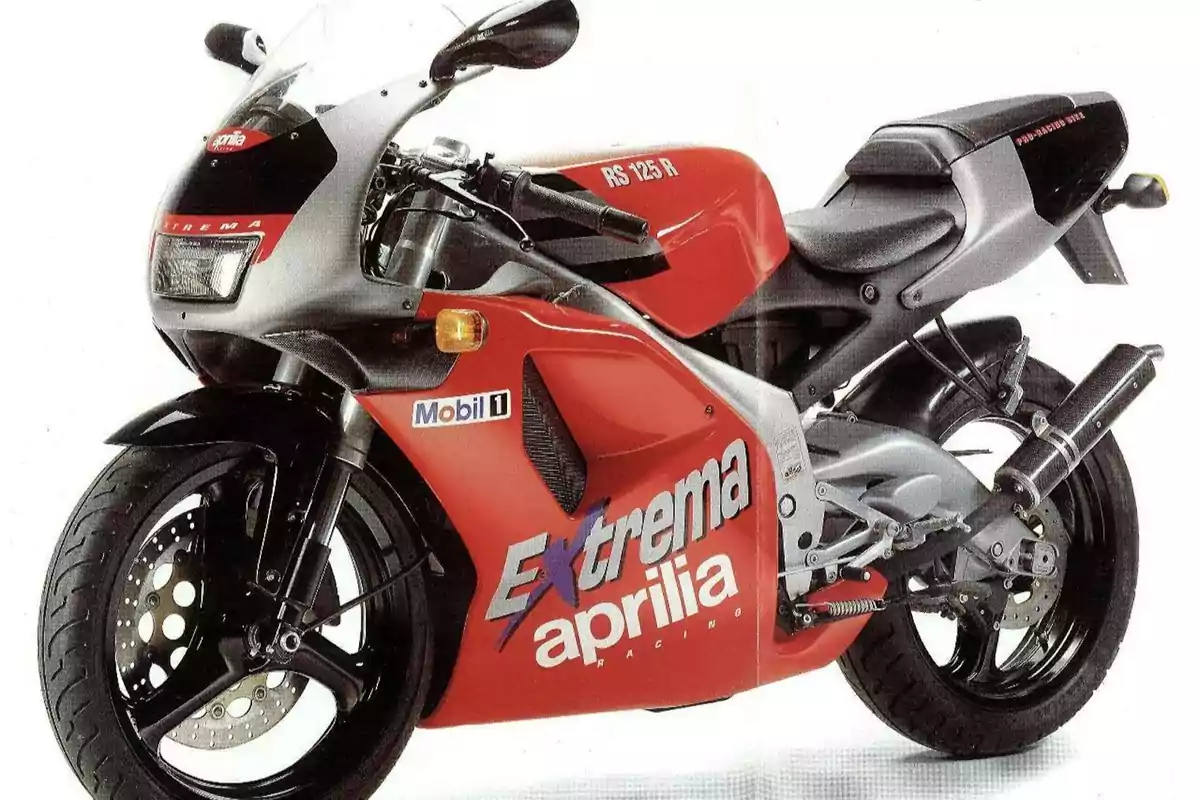
1. Aprilia RS 125 / RS 250
At the end of the '80s, Aprilia found a gold mine in 125 cc two-stroke sport bikes.
Models like the AF1 and the Futura competed with the Gilera KZ and KK. But it was the arrival of the RS 125 that made history.
With an aluminum chassis, Rotax engine, and almost 40 hp (30 CV), it offered a Grand Prix look in a compact format.
Its performance was impeccable and the 50 cc versions, identical on the outside, won over thousands of young people.
In 1995, thanks to an agreement with Suzuki, the RS 250 arrived: a twin-cylinder with almost 94 hp (70 CV) and sharp performance, capable of putting many 4-stroke four-cylinders in trouble.
Light, precise, and with a GP bike look. That's how it became a dream reserved for those who wanted the closest thing to a 250 competition bike for the street ever made in Europe.
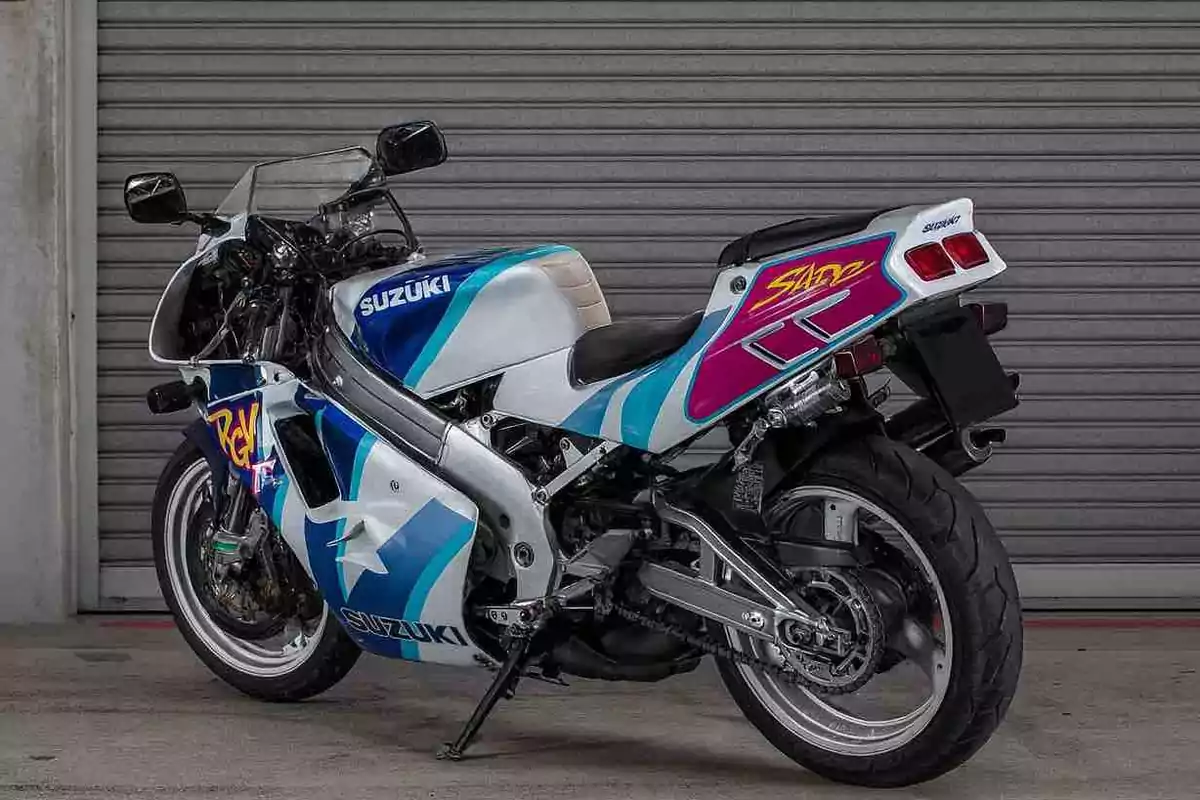
2. Suzuki RGV 250
The Suzuki RGV 250 was the origin of that Aprilia. Inspired by 250 cc GP bikes, it featured a V2 two-stroke twin-cylinder engine. The top-level chassis and very low weight gave it spectacular performance.
In Japan and other European markets, it was common to see it, but in Spain its presence was minimal.
It was thanks to the RGV Cup, when Suzuki imported some units for those races. After racing a season, the riders could register them, and so they began to circulate on our roads.
Its price was similar to that of a 600, it was almost as fast and braked better, although it didn't offer the same "status" as a big bike.
The RGV had three generations. The VJ21 (late '80s) had two side exhausts, 18 in. wheels, and 74 hp (55 CV).
In 1991, the VJ22 appeared, with stacked exhausts on the right, 17 in. wheels, and about 86 hp (64 CV), with the engine used by Aprilia.
In 1997, the VJ23 arrived, the last and most advanced, with a new 72° V engine. A true gem almost unknown in Europe, which remains one of the street bikes closest to a GP ever made.
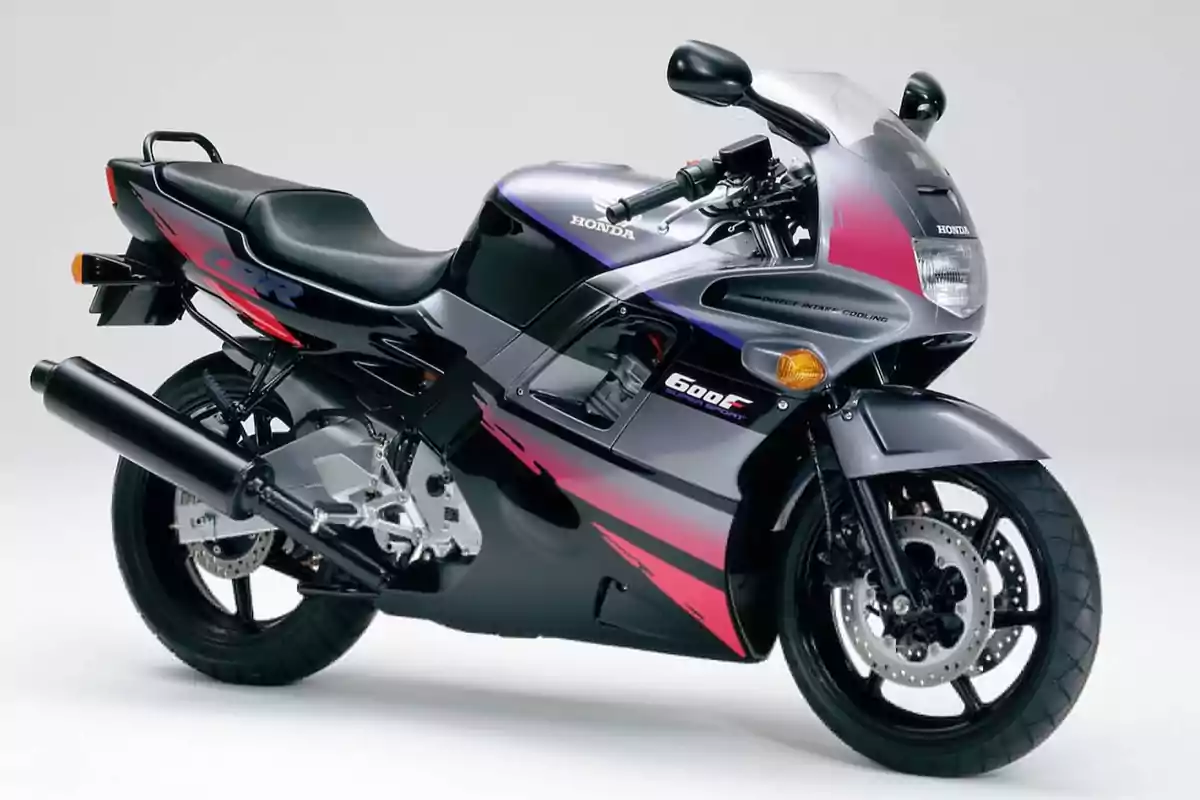
3. Honda CBR 600
If there's a bike that symbolizes the '90s, it's the Honda CBR600. Even more so the CBR600 FII version, popularly known as "the Benetton" for its colorful fairing.
The CBR was born in 1986 to compete in a segment dominated by Kawasaki GPZ and GPX and soon found its place thanks to its balance between performance and versatility.
The first generation surprised with its round tube chassis, when the trend was aluminum perimeter frames. With its "Aero" bodywork inspired by the Ducati Paso, which completely hid the mechanics.
Versatile and easy to ride, it proved that you didn't need to be a radical RR to conquer the market.
The big leap came in 1991 with the CBR600 FII. It was lighter, with an open fairing, raised tail, and 127 hp (95 CV) of power.
That's how it became a versatile bike. It was capable of touring Europe loaded with luggage, moving nimbly in the city, or winning races in the Supersport World Championship.
Its reliability and its ability to adapt to any use made it an icon, and today many of them are still on the road and fetch high prices in the used market.
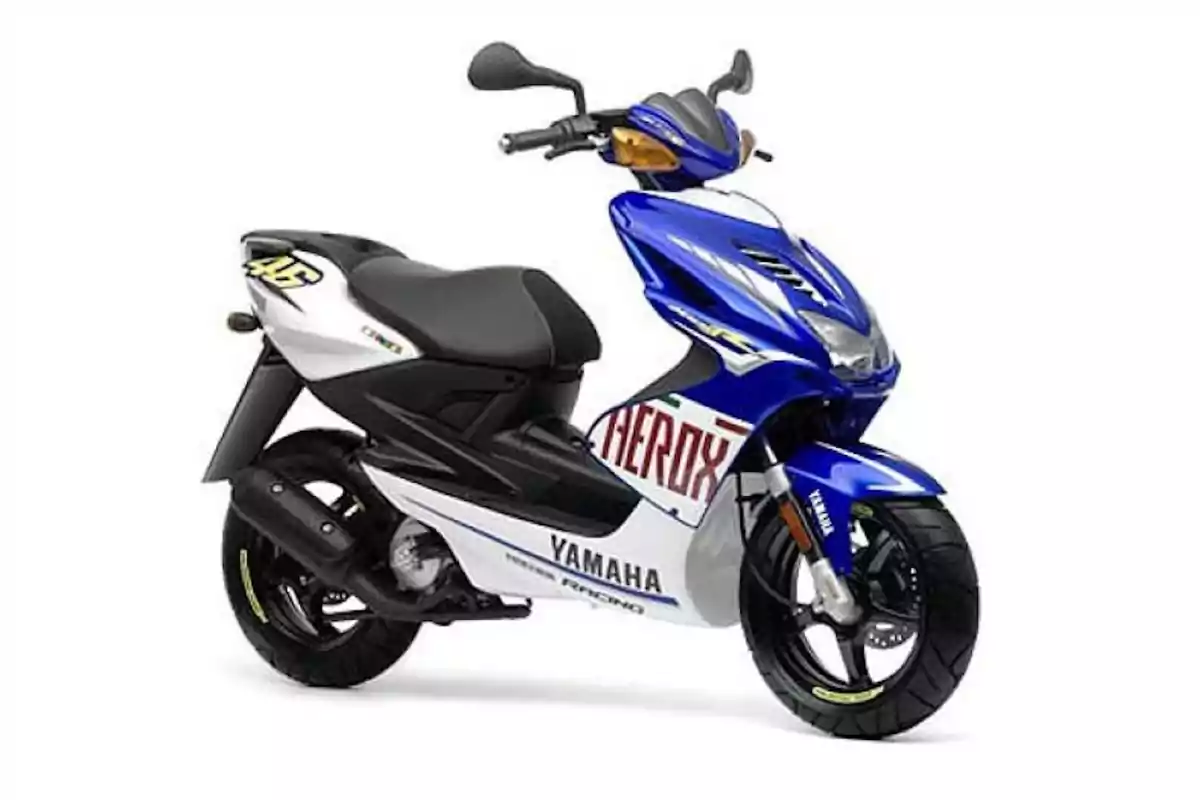
4. Yamaha Jog / Aerox
The Honda CBR600 is the great representative of '90s motorcycles. Among the small ones, we could give the title to the Yamaha Jog and Yamaha Aerox. They were the representatives of that 50 cc scooter "boom."
It became the favorite vehicle of young people who dreamed of an automatic 50 cc moped. It was perfect for getting around the city and, with a few parts, turning it into a two-wheeled rocket.
It was a market with legendary models like the Piaggio NRG, Gilera Runner, Peugeot Speedfight, or Aprilia SR. The Jog and Aerox stood out for their combination of lightness, attractive design, and huge customization possibilities.
The Jog offered simplicity and extreme agility, while the Aerox provided a larger chassis, racing aesthetics, and "Replica" versions that caused a sensation.
Both shared the reliable Minarelli engine, air-cooled in the basic Jog and water-cooled in the Jog R and Aerox, with a wide catalog of parts to boost their performance.
They weren't just stars on the streets: they were also seen on the grids of the emerging scooter races, going up against the fast Piaggio Zip.
For a whole generation, they were the symbol of freedom on two wheels. You could still legally ride them from the age of 14 and with far fewer restrictions than today.
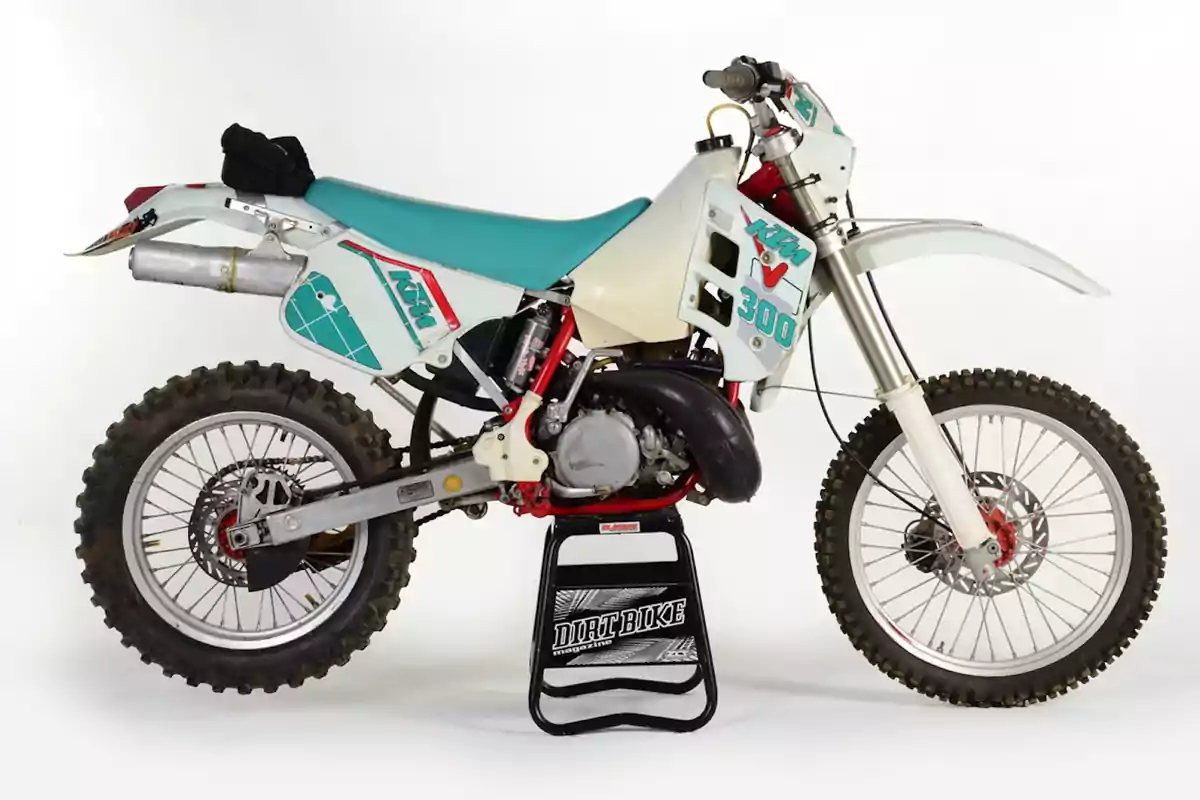
5. KTM GS / EXC 250
At the end of the '80s, Spanish brands had practically disappeared from enduro. The Japanese were focused on motocross models. Then, KTM began to stand out with a complete range of off-road bikes under the MX and GS names.
They were white bikes, well equipped, with effective chassis and powerful engines, capable of competing at the highest level.
Among them all, the KTM 250 GS became the ideal option for those looking for a street-legal, competitive, and reliable enduro.
In 1991, it debuted white and green graphics. A few years later, its name changed to EXC, along with a new "pumpkin" orange color that would end up being the brand's hallmark.
The change coincided with the abandonment of the slogan "Fun In Motion" and the arrival of the now legendary "Ready to Race." This perfectly reflected its racing philosophy.
While many historic brands disappeared or reduced their presence, KTM's 250 2T remained a reference in enduro. It was fast, tough, and suitable for both amateur and professional riders.
Whether in its white GS stage or in the orange EXC era, this Austrian bike became the symbol of '90s enduro. Also one of the most beloved models among fans of the specialty.
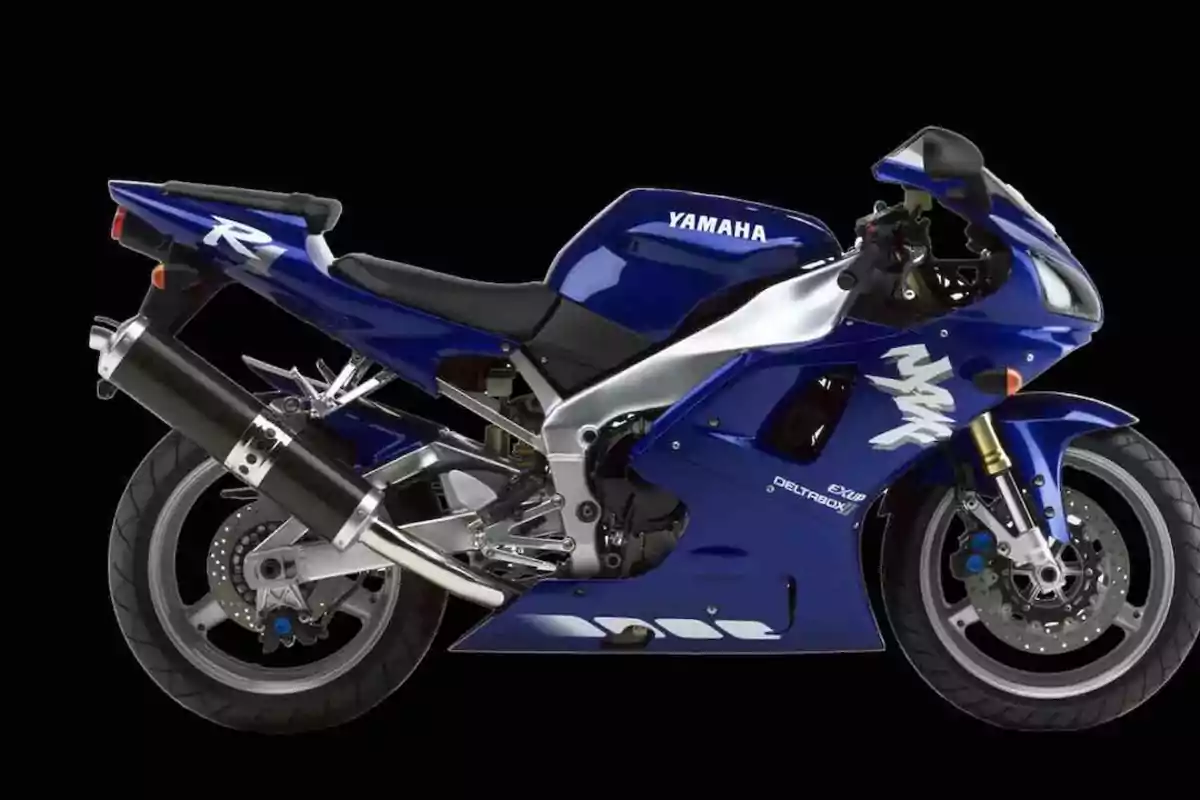
6. Yamaha YZF-R1
In 1997, Yamaha revolutionized the sport bike world with the YZF-R1, a bike that took the concept of radicalism one step further.
With just 386 lbs. (175 kg), 198 hp (150 CV), and a wheelbase of less than 55 in. (1,400 mm), it offered brutal acceleration and unprecedented agility. It was capable of lifting the front wheel with ease and sliding the rear if you opened the throttle without hesitation.
It wasn't a bike for everyone: it was designed for those seeking extreme sensations.
The R1 was born as a response to the trend started by Honda with the CBR900RR Fireblade. The focus was on lightness and torque rather than the pure power of the 1000 cc bikes of the time.
Until then, Yamaha's sport range culminated with the Thunderace. It was the heir to the legendary FZR1000 Exup, but the arrival of the R1 marked a turning point.
It set a new standard: more power, less weight, and a 100% sport orientation.
Today, with the evolution of electronics and riding aids, its successors are more manageable. But that first R1 remains a benchmark and a recurring dream for lovers of pure sport bikes.
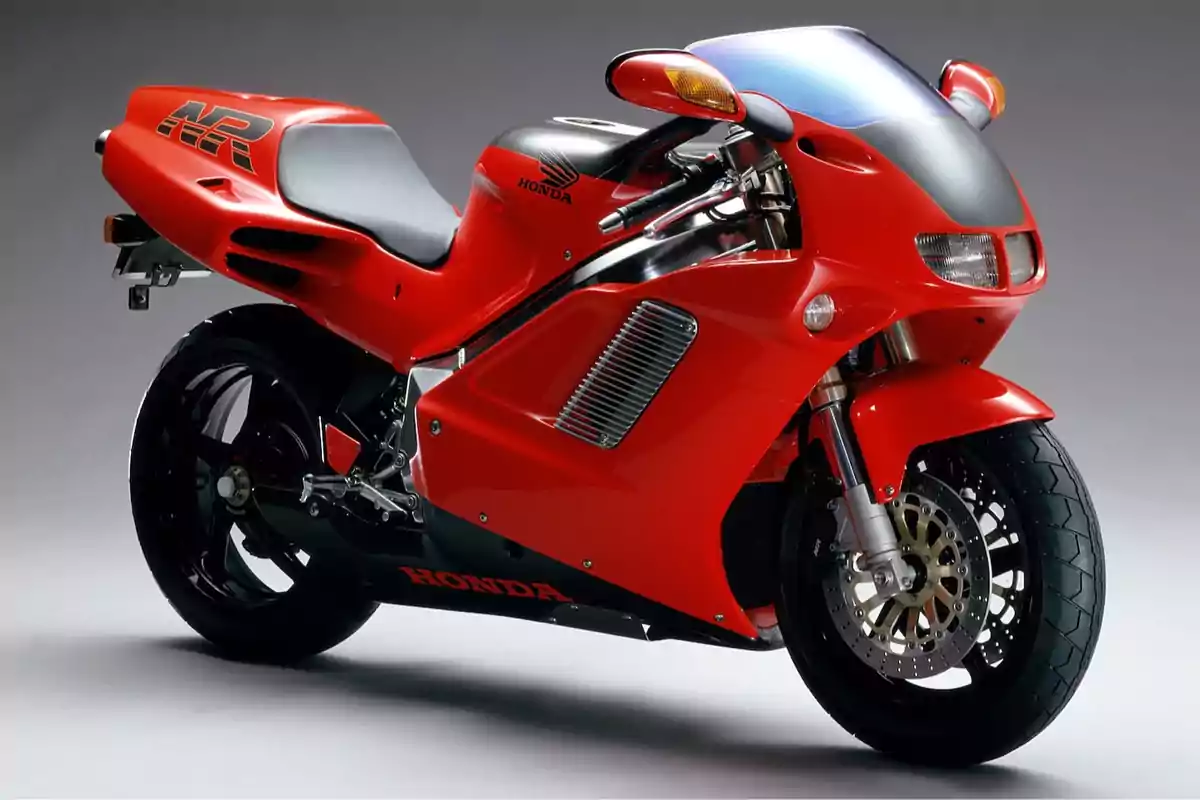
7. Honda NR 750
The Honda NR 750, presented in 1992, is possibly the most exclusive and advanced road bike to come out of Japan in the '90s.
Manufactured by HRC in a limited edition, it was designed more to be admired than to compete in performance with other sport bikes.
Its futuristic look and unique engineering made it an object of desire for collectors around the world.
Its origin dates back to the late '70s. Honda developed the NR500 competition bike with an ambitious goal. Nothing less than defeating the dominant 2-strokes in the 500 cc World Championship with a four-stroke engine.
To achieve this, they devised unprecedented technology. It featured oval pistons, each with two connecting rods and eight valves. The aim was to combine the compactness of a V4 with the performance of a V8.
The project, however, failed on the track and was replaced by the successful two-stroke NS and NSR models.
The street version kept that oval piston engine and surrounded it with high-tech details. It included everything from the faired kickstand to a special dashboard glass. It was designed so you wouldn't lose visual focus when shifting your gaze from the road to the instruments.
It offered performance similar to any conventional 750 of the time. Its true value lay in its exclusivity, engineering, and the ability to make any two-wheel lover dream.

8. Yamaha TZR 50
The exclusive Honda NR 750 was reserved for a privileged few. But for many teenagers in the late '90s, the bike of their dreams was much more accessible: the Yamaha TZR 50.
It was designed for those who wanted to get around every day, go to school, meet friends, and, in the process, start enjoying their first curves. This small sport bike offered the look and feel of a big bike in a 50 cc format.
Equipped with the reliable Minarelli AM6 engine and a simple but effective chassis, its design imitated the brand's big sport bikes. We're talking about the Thunderace 1000, with full fairing, clip-on handlebars, and a long, comfortable two-seater seat with passenger handles.
The Minarelli engine had a huge catalog of tuning parts. This made it an ideal base for those who wanted to get the most out of it.
Thus, the TZR 50 earned a reputation as a true scaled-down sport bike, versatile, reliable, and with huge appeal for young people.
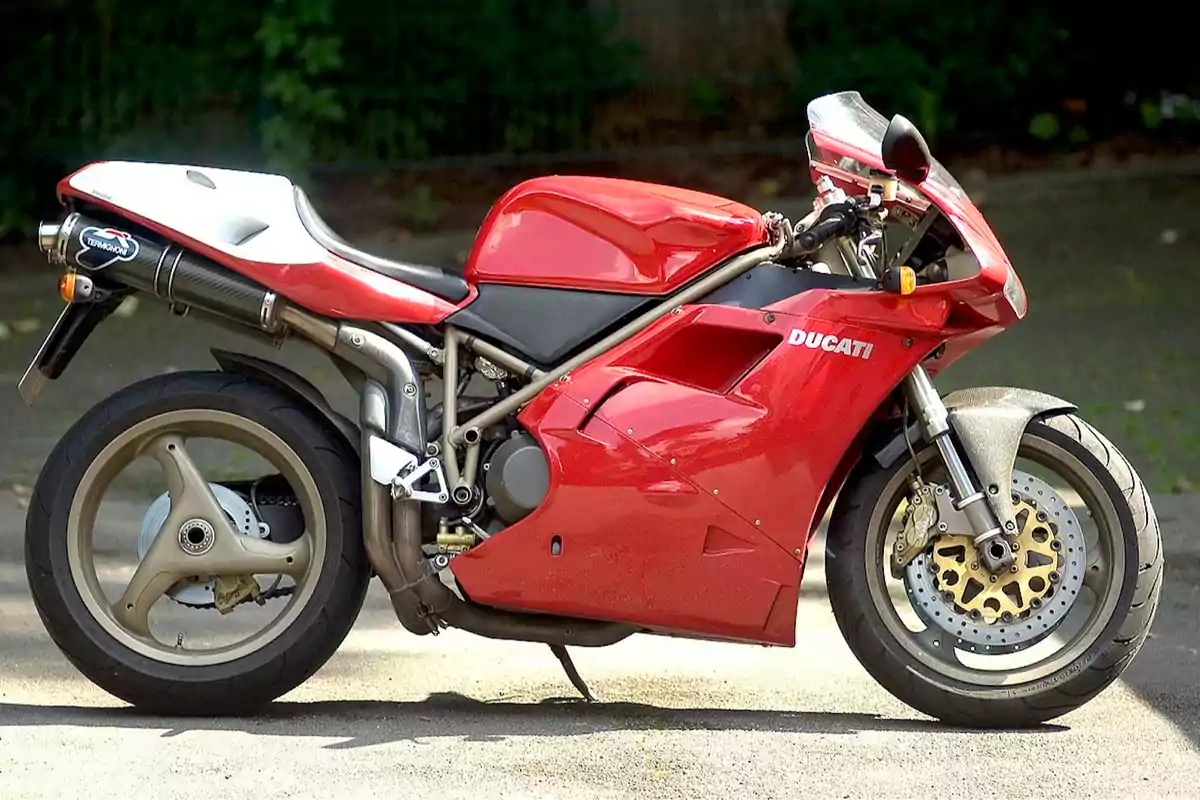
9. Ducati 916
The 916 marked a turning point in Ducati's history.
The '80s were complicated. Only the exclusive 851 and 888 kept up the pace in Superbikes. The Bologna brand excelled again thanks to a model that combined looks, engineering, and success in competition.
Designed by Massimo Tamburini, the 916 featured a trellis frame, single-sided swingarm, high exhausts, and narrow headlights, all wrapped in a red body with elegant, compact lines.
It had a twin-cylinder engine with eight valves and 153 hp (115 CV), less powerful than its rivals, but with strong torque and an outstanding chassis.
Its performance in the SBK World Championship was immediate, and as Paco Bultó said, "sales follow the checkered flag."
The 916 gave rise to special versions like the SP and SPS. It evolved into the 996 and 998, extending its legacy until the arrival of the 999 in the 21st century.
Beyond its numbers, it remained forever an icon of Italian design. Also as one of the most beautiful and successful Superbikes of all time.
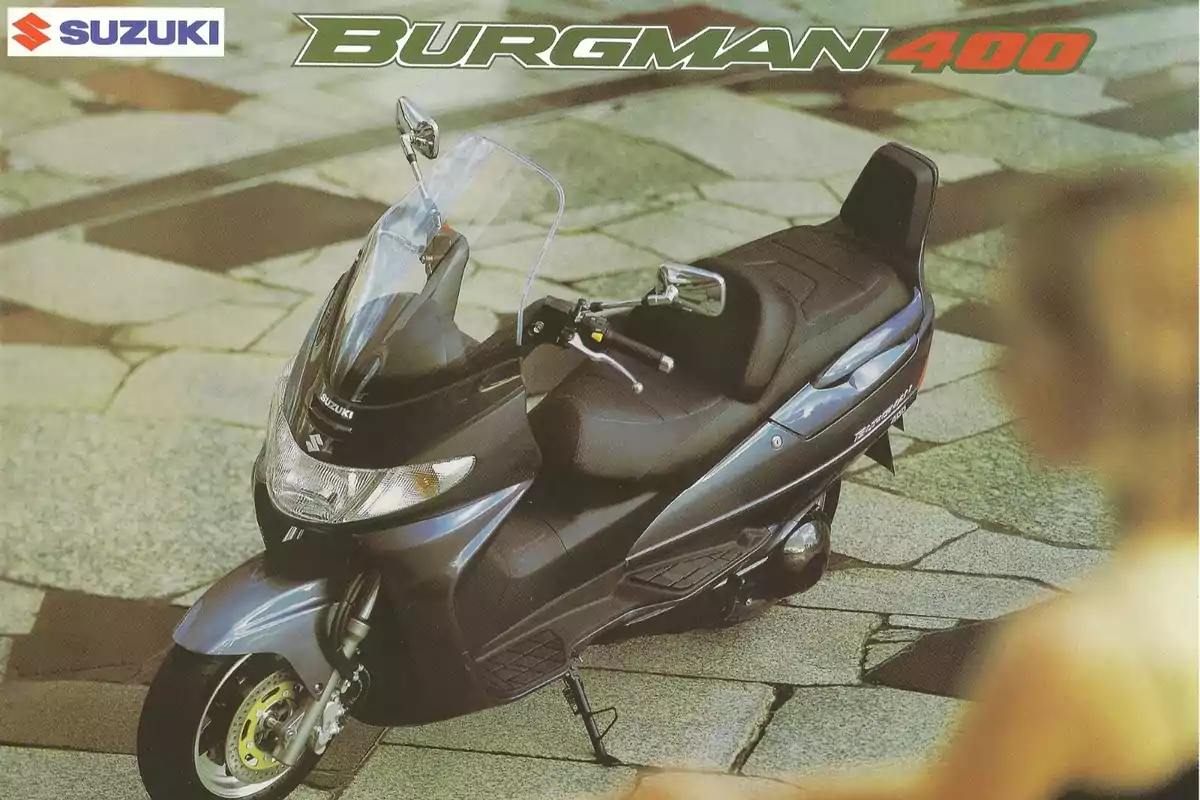
10. Suzuki Burgman 400
In 1998, Suzuki's Burgman 400 broke the established limits for scooters and became the first large-scale maxiscooter to surpass the 250 cc barrier.
Until then, the norm in this segment was engines up to 250 cc with about 37 hp (28 CV), variator transmissions, and centrifugal clutches.
Suzuki decided to go further. It introduced a 400 cc single-cylinder, 43 hp (32 CV), over 87 mph (140 km/h), and the capacity to store two full-face helmets under the seat.
Although its character was utilitarian and it was far from the image of a dream bike, for many users it marked a turning point.
It allowed for daily commutes in total comfort and the possibility of taking long road trips without giving up the practicality of a scooter.
Its arrival started an escalation of displacements and power that led to today's maxiscooters.
The Burgman 400 was the first model that made many riders, no longer so young, consider that a scooter could successfully replace their everyday bike.
More than two decades later, it remains a historic benchmark and the pioneer of a generation of scooters that still make many people dream today.
With this review of the iconic bikes of the '90s, we put an end to a journey through three decades of motorcycle history.
From the '70s to the '90s, we've seen how two wheels have evolved. How the brands changed. How, despite the passage of time, there will always be a bike that occupies a special place in our dreams.
More posts: